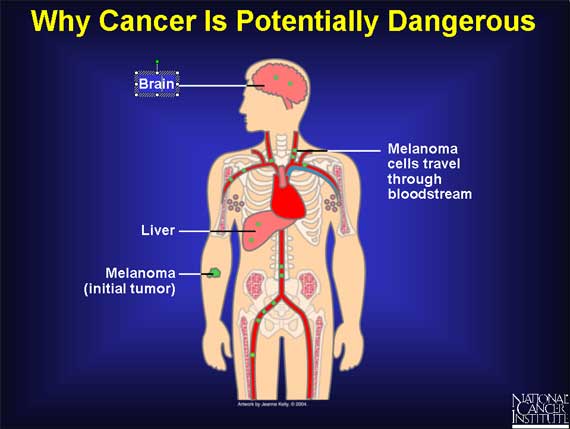|
A malignant tumor, a "cancer," is a more serious health problem than a benign
tumor because cancer cells can spread to distant parts of the body. For
example, a melanoma (a cancer of pigmented cells) arising in the skin can have
cells that enter the bloodstream and spread to distant organs such as the liver
or brain. Cancer cells in the liver would be called metastatic melanoma, not
liver cancer. Metastases share the name of the original ("primary") tumor.
Melanoma cells growing in the brain or liver can disrupt the functions of these
vital organs and so are potentially life threatening.

< Previous | Index | Next Slide > |